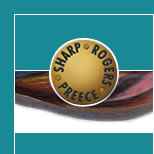 |
Chapter Introduction
| Web Resources | Assignment
Comments | Teaching
Materials
The assignment in chapter 9 asks you to design and evaluate a timepiece. This may sound daunting task, so we suggest here some issues that might help you when tackling it.
The idea behind a clock is to communicate the time. Traditionally this has been done using an essentially round clock face (the surround may in fact be any shape, but having rotating hands inevitably results in an essentially round display). Digital watches which display the time in numbers bring a different kind of accuracy to time keeping, and also lend themselves to a different kind of design.
Some design considerations:
- What kind of watch is it to be: wrist, mantel, casement etc? This influences the size and the practicality of some designs.
- How accurately does the watch need to display the time? For a stop watch used in sports or in timing experiments, the timepiece needs to have great accuracy, down to tenths or hundredths of a second. However, for other purposes, the accuracy can be within one or two seconds, and in other cases within a minute may suffice.
- It needs to show a changing state, and this requires something to move. This can be achieved by having two shapes moving across each other (e.g. a sundial has essentially two shapes moving one over the other), or by the transference of a substance from one place to another, e.g. water going from one container to another, or light gradually increasing and decreasing in intensity.
- What will power the clock? This may be electricity, or mechanical, but it may also be solar or driven by a more unusual power source such as a potato or apple. (Yes, they do exist and they do work!)
|
  
|
